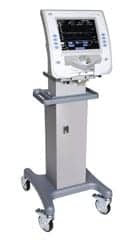How healthcare equipment financing helps healthcare organizations conserve cash, combat labor shortages
By Mark Thomas
In addition to the supply chain and labor shortage issues we are still feeling in every industry—most notably, healthcare—our nation’s businesses face rising interest rates amid uncertain economic times. Still, healthcare organizations work steadfastly to move business forward by offering state-of-the-art equipment that attracts the industry’s best talent, and grows the service offering and patient load.
Technology in medicine is evolving at incredible speed. Leasing and financing healthcare equipment offers a cost-effective solution for providers to keep up. The healthcare equipment leasing market is expected to grow at a compound annual growth rate (CAGR) of around 7.6% during 2022-2027, according to a recent report from Arizton. Additionally, the Equipment Leasing and Finance Association Survey of Equipment Finance Activity noted that medical equipment represented 4% of equipment financing volume in the U.S. in 2022.
Rather than spending large sums of cash, a healthcare provider can lease an MRI scanner and associated facility upgrades, freeing up cash for operating expenses or hiring top talent.
Leading companies, including healthcare organizations, combat the labor shortage by implementing automation solutions that create efficiencies and streamline workflows. The benefits are twofold. First, the technology allows healthcare organizations to do more with fewer people. Plus, newer, high-tech equipment helps providers to attract and retain a talented workforce.
Types of Healthcare Equipment Financing Solutions
Financing should be structured to meet each organization’s objectives and goals. Structures include:
Equipment lease. Leasing equipment allows healthcare organizations to preserve working capital and lines of credit for other business investments. Healthcare providers also gain flexibility, as payments can be designed to match budget requirements, and terms aligned with the equipment’s useful life.
Leasing equipment also offers potential obsolescence and depreciation protection, with the ability to add or upgrade equipment during the lease term. The option allows the provider to utilize the newest and best equipment for their facility. Oftentimes, the equipment manufacturer will recycle the old equipment, a practice that offers a sustainable benefit to the healthcare facility.
Asset finance. Healthcare organizations can increase their transaction sizes and margins by bundling software, installation, and maintenance into one contract with fixed payments. Historically, customers may have been handling several invoices tied to a specific piece of equipment (i.e., the machine, the software, and the cost of construction), and a lender can bundle all those costs into one payment—even financing the buildout to get a specific room or area remodeled to fit the new equipment.
With a 100% financing option, healthcare providers acquire what they need to manage their business, typically with no advance payment and one fixed monthly payment. This option offers a noticeable advantage over a 75% loan-to-value term loan financing. If the useful life of the equipment is longer, many lenders can finance longer terms—say, seven years—to meet the borrower’s budgeting needs.
Customized financial solution. Equipment financing may also provide tax advantages for healthcare organizations. A carefully structured financing plan can maximize equipment depreciation and tax credits while minimizing income tax liabilities.
Not all healthcare providers can utilize the full tax depreciation of their equipment assets. Leasing with a strong financing partner can unlock additional depreciable value in the form of lower payments.
Key Considerations for Financing Options
When financing healthcare equipment and related systems, healthcare providers need to consider return on investment, or ROI, weighing the structure and choosing the right lending team.
Assess the ROI. ROI will vary depending on whether the equipment is an upgrade or added to increase patient load. Also, consider how the equipment will impact facility operations, and how long newly acquired assets will need to be in production before the facility realizes savings or revenue. Lenders should provide guidance related to the equipment’s residual value and useful life, which are key to determining a sound financing solution.
Evaluate details of each financing option. The organization’s finance team should have a clear understanding of the lease conditions—including term, monthly payment, and end-of-term options—as well as flexibility for paying off the lease early, upgrading technology, and adding equipment under the agreement.
Also, examine the soft costs and whether they can be financed. Determine if the lease can be renewed and know how liable the provider is if the equipment is damaged or destroyed. Learn of any additional fees that will be due during or at the end of the financing period.
Fixed rates and rate locks are important considerations, especially in a period of increasing interest rates from the Federal Reserve. Locking in lower fixed rates can be a valuable tool. Some equipment term lenders are able to lock in rates today for equipment purchases in the future, also known as rate lock programs. Know your lender’s capabilities.
Select a financing team. The right financing team should provide the information needed to consider all available tools and make a wise decision to acquire the equipment a business needs to stay competitive in the quickly changing healthcare industry. Healthcare providers should be bold in asking their potential financing provider the tough questions so they can truly evaluate and select the ideal team.
Consider these questions:
- “Do they understand my organizational structure and how this transaction needs to be customized to meet my business requirements?”
- “Do they make time to listen to me?”
- “Do I feel like this financing provider wants to see my business succeed and will guide me through the entire process?”
- “Can they accommodate my needs for customized payments to match my budget?”
- “Is this a well-established finance team that has survived economic ups and downs, and are they experienced in financing healthcare equipment?”
Although healthcare organizations are familiar with finding balance between tight budgets and making capital investments in the business—especially in today’s current environment—there are multiple options when it comes to equipment financing. Finding a finance provider that takes the time to understand the specific needs of the organization and has a track record of success financing healthcare equipment investments is an important part of the equation.
Mark Thomas is senior vice president and west region sales director for KeyBank. Questions and comments can be directed to 24×7 chief editor Keri Forsythe-Stephens at [email protected].




